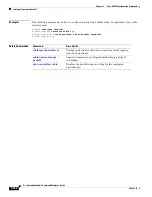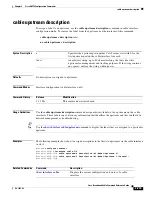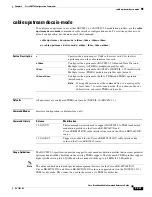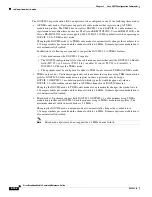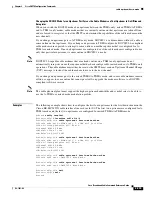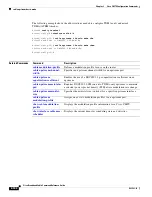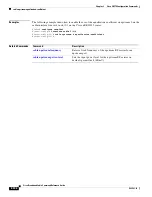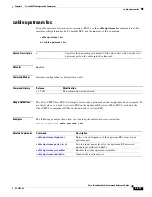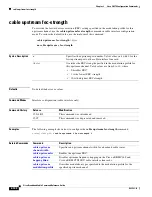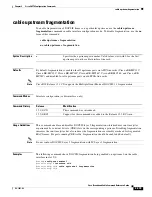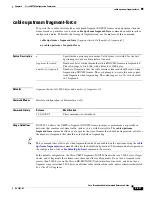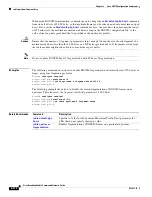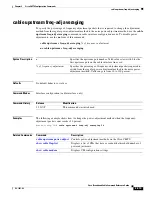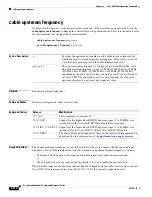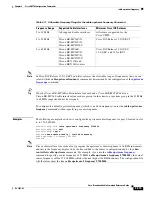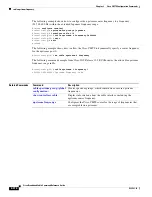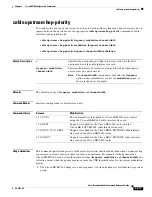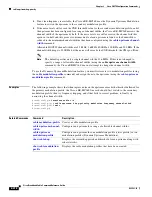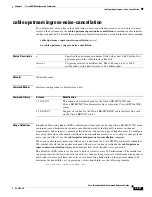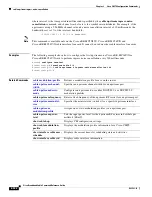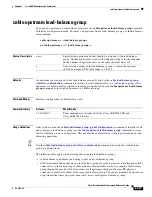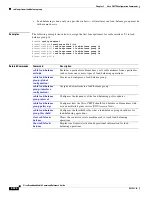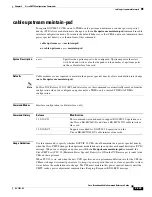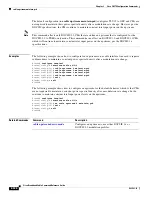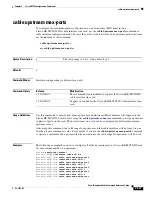
2-312
Cisco Broadband Cable Command Reference Guide
OL-1581-08
Chapter 2 Cisco CMTS Configuration Commands
cable upstream fragment-force
When using DOCSIS concatenation, you might need to change the
cable default-phy-burst
command
from its default size of 2,000 bytes, so that multiple frames can be concatenated into a maximum-sized
burst. If you set the
cable default-phy-burst
command to zero, the max burst then becomes the lowest
of 255 mini-slots, the maximum concatenated burst setting in the DOCSIS configuration file, or the
value of the long data grant burst that is specified in the upstream’s profile.
Caution
Ensure that the
number-of-fragments
parameter is large enough to keep the size of each fragment of a
mximum-sized burst less than the 2,000 bytes or 3,500 bytes specified above. If fragments are too large,
the cable modem might not be able to come online or pass traffic.
Note
Do not confuse DOCSIS Layer 2 fragmentation with IP Layer 3 fragmentation.
Examples
The following command shows how to enable DOCSIS fragmentation on frames that are 1500 bytes or
larger, using four fragments per frame:
Router#
configure terminal
Router(config)#
interface c2/0
Router(config-if)#
cable upstream 0 fragment-force 1500 4
Router(config-if)#
The following example shows how to disable the forced fragmentation of DOCSIS frames on an
upstream. This also resets the
fragment-threshold
parameter to 2,000 bytes.
Router#
configure terminal
Router(config)#
interface c5/1/0
Router(config-if)#
no cable upstream 0 fragment-force
Router(config-if)#
Related Commands
Command
Description
cable default-phy-
burst
Specifies a value for the upstream Maximum Traffic Burst parameter for
CMs that do not specify their own value.
cable upstream
fragmentation
Enables fragmentation of DOCSIS frames on a particular upstream.

